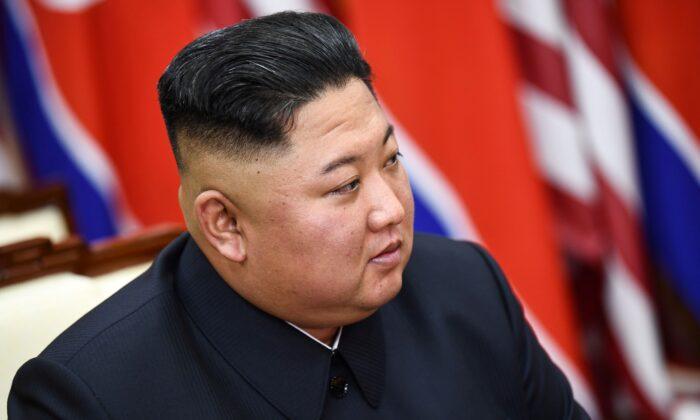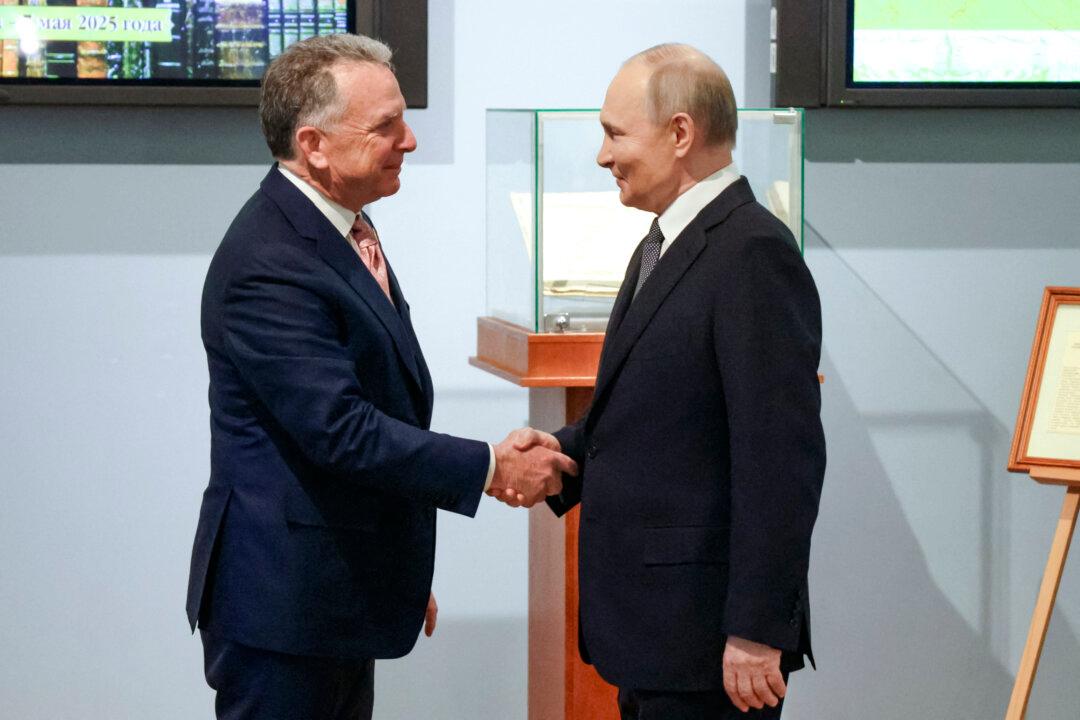North Korea has launched two missile tests which it claims were designed to simulate nuclear strikes on South Korea.
North Korean state media said that the Aug. 30 missile launches simulated “scorched earth” nuclear strikes, and claimed that it also rehearsed an occupation of South Korea.
The regime’s military wing said that it fired two tactical ballistic missiles from Pyongyang Wednesday night, which would be aimed at major command centers in South Korea in the event of a war.
The statement said that the missiles carried out their simulated strikes through air bursts, suggesting it confirmed the explosions of dummy warheads at a set altitude.
In the event of a real war, the high-altitude detonation of a nuclear warhead could cause catastrophic damage both through the initial blast as well as its related electromagnetic burst.
South Korean and Japanese assessments of the missile tests suggest that the two tactical missiles traveled close to 250 miles at a maximum altitude of 30 miles high before landing in the waters between Korea and Japan.
North Korea Claims US Preparing Invasion
North Korea said the tests were a response to the United States’ flyover of long-range bombers over South Korea for a joint aerial training exercise with South Korea earlier in the week.
Pyongyang condemned the exercises as a “serious threat,” claiming the United States was preparing an invasion. The nation remains prepared to counter “military gangsters” from Washington and Seoul, officials said.
South Korea’s Joint Chiefs of Staff called the launches “a grave provocation,” adding that the tests threaten to destabilize the region and undermine international peace efforts.
North Korean General Secretary Kim Jong Un said that the tests demonstrated the North’s ability to “deal a heavy blow at the enemy’s war potential and war command center and blinding their means of command communication at the initial stage of operation.”
The Pentagon, meanwhile, urged restraint, calling on Mr. Kim to pull back from such provocative behavior.
“We would call on North Korea to refrain from any kind of proactive rhetoric or behavior,” said Defense Department spokesperson Gen. Pat Ryder during an Aug. 30 press hearing.
“We will continue to be focused on deterrence… to ensure the safety and security of our nations,” he added.
The Pentagon declined to expand on Gen. Ryder’s comments.
The United States condemned North Korea’s Aug. 30 missile launches.
“These launches are in violation of multiple United Nations Security Council resolutions and are the latest in a series of launches that pose a threat to the DPRK’s neighbors and undermine regional security,” a State Department spokesperson told The Epoch Times in an email.
“Our commitments to the defense of the [South Korea] and Japan remain ironclad,” the spokesperson added.
US, South Korea Grow Closer
North and South Korea have technically been in a state of something resembling war since 1950, when the North, backed by communists in China and the Soviet Union, invaded the South, backed by the United States.
The resulting Korean War was never formally terminated with a peace agreement, but hostilities effectively ceased with the signing of an armistice in 1953.
In the 70 years since, there has never been a formal conclusion to the war, though the United States and South Korea have drawn closer amid continued threats of nuclear annihilation from the north.
There are currently congressional efforts to replace the armistice with a peace deal, but they are contentious and appear unlikely to gain traction.
That relationship between the United States and South Korea, meanwhile, reached its zenith in April, when President Joe Biden received South Korean President Yoon Suk Yeol in Washington.
There, the two signed the Washington Declaration, which strengthened the United States’ commitment to defending South Korea under its nuclear umbrella in exchange for South Korea not pursuing the development of nuclear weapons of its own.
Since then, the United States has sent two nuclear submarines to South Korea, and even invited Mr. Yoon to tour one, resulting in the South Korean leader becoming the first and only foreign leader ever to set foot on a U.S. nuclear submarine.
The show of force drew strong protests from communist North Korea and its ally China, exacerbating tensions amid the already fraught relationships between the democratic and communist powers.
The Associated Press contributed to this report.
This article was updated to include a statement from the State Department.





